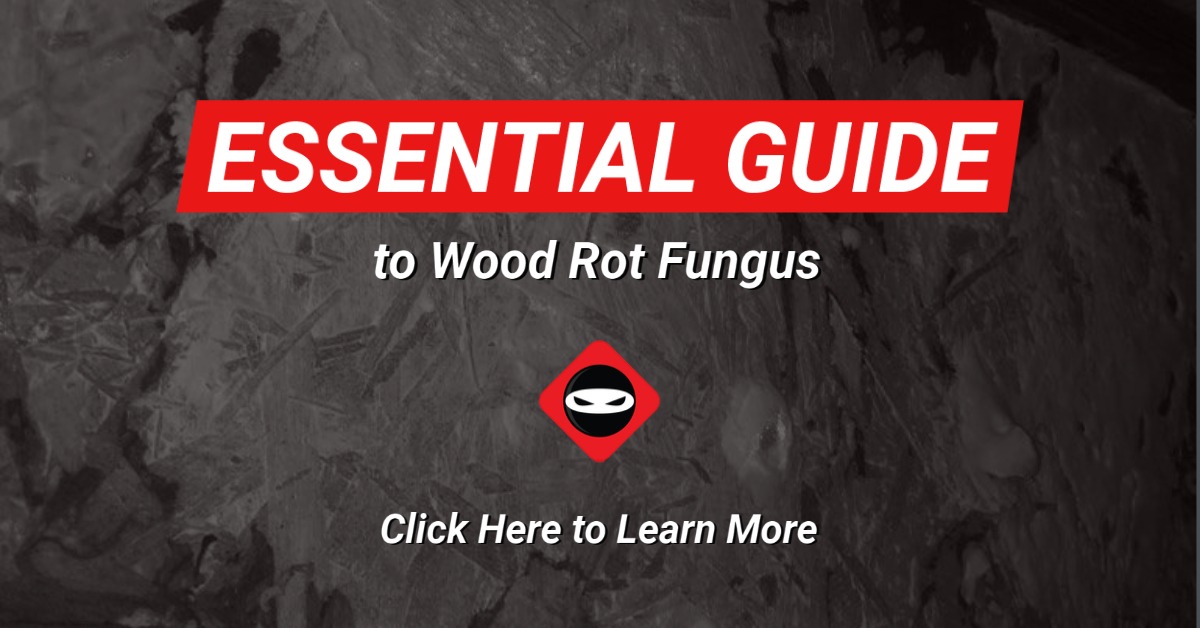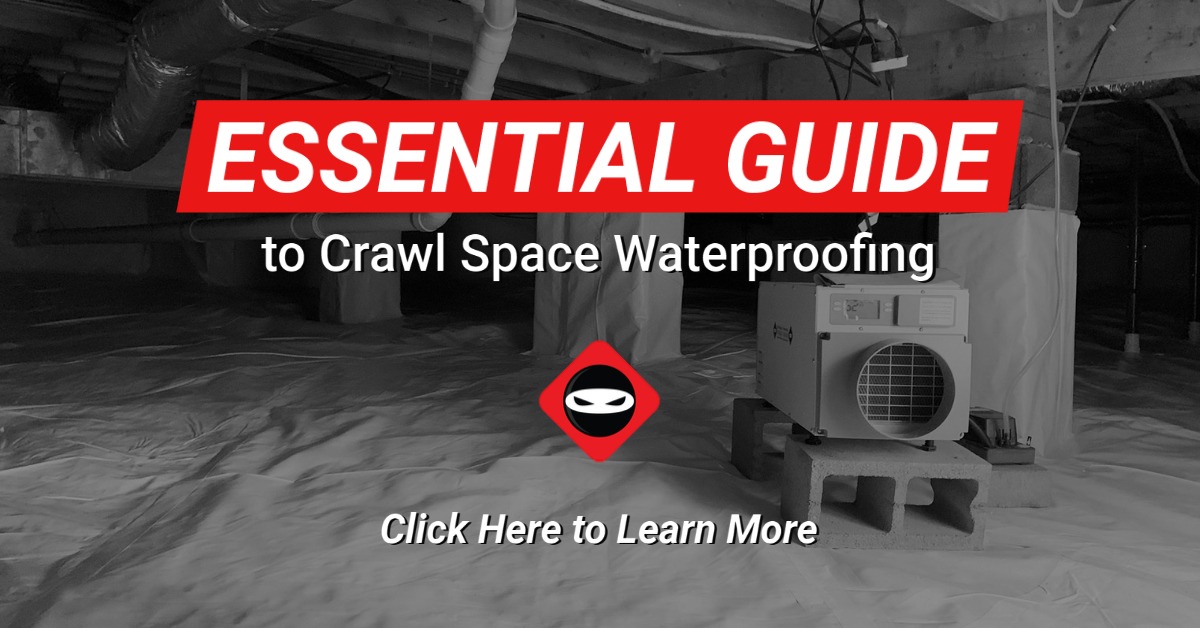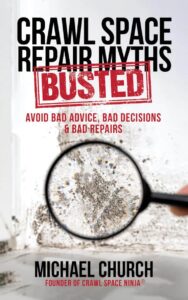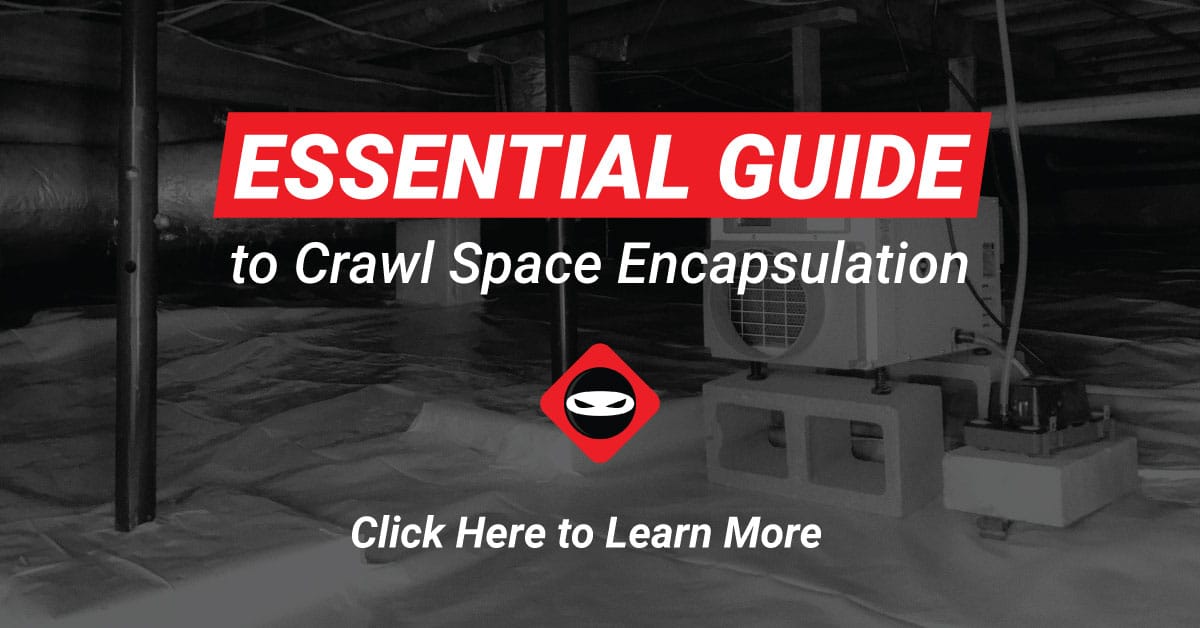If you think installing a loose-laid vapor barrier in your crawl space is enough to control moisture and stop humidity, think again.
Our building practices demand we install a thin 6-mil loose-laid vapor barrier in a vented crawl space. This is the minimum install required by code but it is just a minimum.
Not upgrading your crawl space plastic and installing it properly can cause damage in the future, but there’s more.
Code Requirements for Vapor Barrier Vented Crawl Spaces
According to International Residential Building Code, an open or vented crawl space is treated differently than a sealed crawl space in many ways. One way is the installation of the crawl space vapor barrier. There is no overlapping or taping or sealing requirement in a vented crawl space. Vented crawl spaces also do not require the crawl space plastic to be attached to foundation walls or pillars.
Your guess is as good as mine as to why codes officials determine this method of loose-laid vapor barrier installation is adequate for a vented crawl space. With the addition and power of modern HVAC, it would seem codes for crawl spaces are stuck in the 1950s when it comes to moisture control.
Loose-laid, thin vapor barriers do very little to control moisture and humidity in your crawl space.
Loose Laid Vapor Barrier Installation Requirements
Crawl space plastic installed in an open crawl space only needs to be laid on dirt and all dirt should be covered. There is no overlapping requirement, so once a person crawls into the crawl space, the plastic shifts and exposes the soil. There is also no taping requirement to secure the plastic and keep this from happening. This is why moisture and humidity cannot be properly controlled by a loose-laid vapor barrier.
Destruction Cycle of High Crawl Space Humidity
Once the soil is exposed, ground moisture becomes humidity. High humidity is absorbed by insulation and wood. Insulation traps moisture not allowing the wood to dry. Mold forms and can create an indoor air quality problem.
Consequences of Persistent Humidity
The humid environment causes dust mites, bacteria, viruses, and more to grow unchecked in your home. Wood decay fungus will eventually set in and destroy the structure of your home. Hardwood cups, floors begin to squeak and bounce, termites enter, and you now have a huge, expensive problem to correct. All because the builder went the minimum code requirement route to address your humid crawl space.
Hopefully, this information has shed some light on why you should not settle for the minimum when it comes to your potentially largest investment. If you have a home with an open crawl space and loose-laid vapor barrier, I recommend you have it inspected immediately by a reputable and ethical crawl space repair company like Crawl Space Ninja.
Contact Crawl Space Ninja for Basement Waterproofing and Encapsulation
Please contact us to schedule your assessment to fix your crawl space, basement issue.
Do you need help with mold removal, crawl space encapsulation, crawl space insulation, vapor barrier, waterproofing, foundation repair, basement waterproofing, or controlling humidity in your crawl space?
If you live in Georgia, Delaware, North Carolina, South Carolina, Tennessee, or Kentucky, Crawl Space Ninja can help!
Also, let us know in the comments below if you have an idea for a new blog topic.
DIY Crawl Space Repair
Perhaps you’d like to tackle your own crawl space repair. Visit our DIY Store.
Join Crawl Space Ninja as an Owner
Learn about Crawl Space Ninja Franchise opportunities.




Michael Church’s Crawl Space Repair Myths-Busted book was written to help you Avoid Bad Advice, Bad Decisions, & Bad Repairs.
“This book is the Cadillac for crawl space information and Michael Church is your experienced driver. What can I say? It’s just an amazing read.” 5.0 out of 5 stars The real deal.


8 thoughts on “Misconception: Loose Laid Vapor Barrier is Enough to Control Moisture”
does the vapor barrier on an inside wall need to have a silicon bead to seal the top of it so that vapor doesn’t escape from the space
Many recommend a caulk to “seal” the moisture behind the plastic. My only problem is thee adhesives fail eventually and become useless. I am more incline to use a butyl tape and shoot a nail through it. hope that helps.
How can a shed converted to mini house have moisture barrier when it’s too to get under it?
Hi Teresa, it can’t unless you raise the shed or put plastic down before installing the shed. Hope that helps.
Will there be a problem if i lay down moisture barrier on top of wet and muddy soil?
We have to do that often. It is not ideal but many times the crawl space dirt will never dry fully so you have to place vapor barrier over wet soil. Hope that helps and thanks for commenting.
I have a vented crawl space , what do you do when you don’t have the clearance to crawl everywhere. I have rolled out plastic everywhere pushing it to the foundation walls . The house was built in 1964 and before I installed the plastic it had rained 1/2” and crawl space was bone dry ,no mud or water . It’s around 500 square foot . Could I put a dehumidifier in also and close off the vents ? I am in Missouri. Thanks
It sounds like you’ve done the best you could do considering the crawl space is so low. I would certainly put in a dehumidifier if you see the humidity is over 60% in the crawl space.